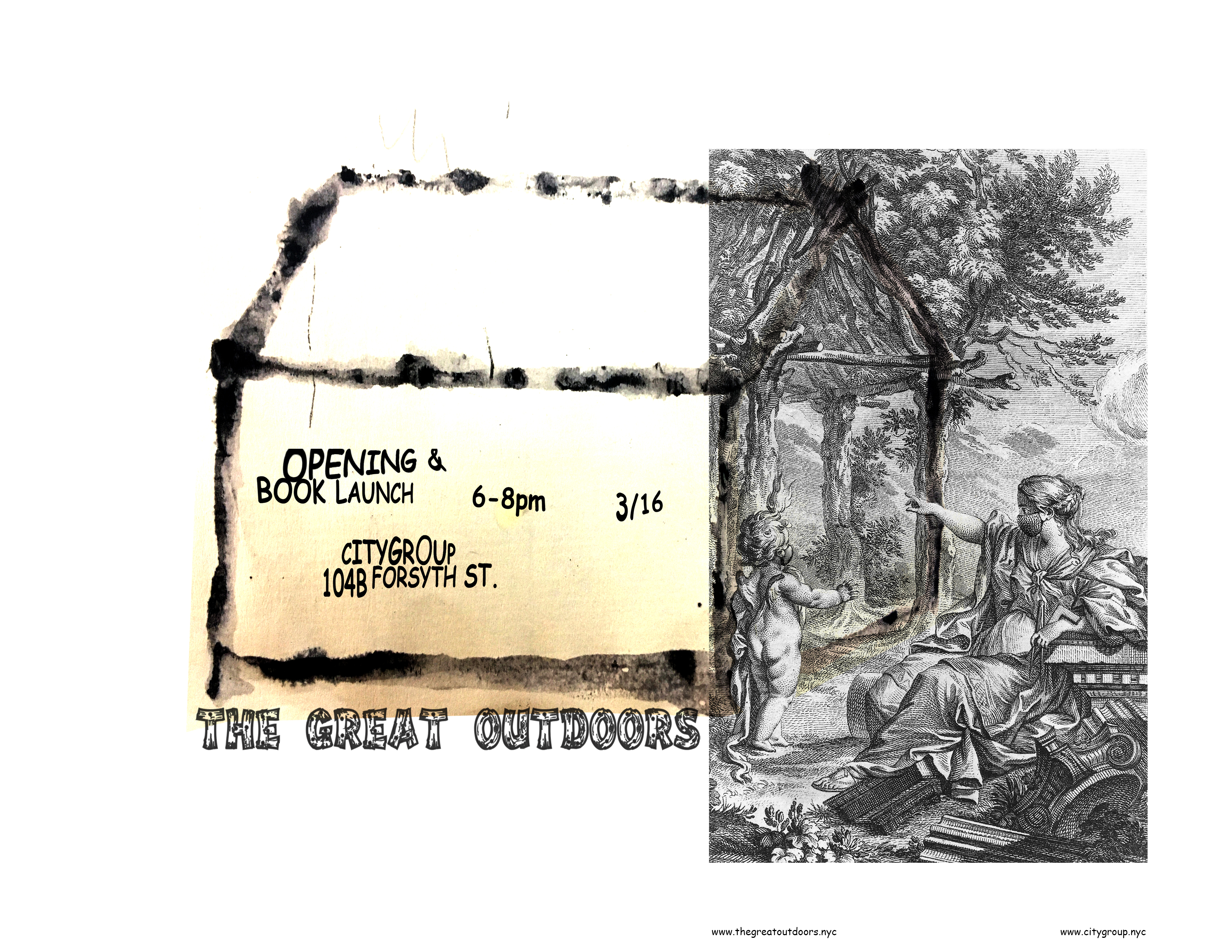
The Great Outdoors:
Outdoor Dining Solutions in New York City 2020-2021
By Sebastijan Jemec + Simon Jolly
thegreatoutdoors.nyc
Opening and Book Launch
104b Forsyth street
Thursday, March 16, 2023
About:
In the early days of the 2020 pandemic, New York City curbs became parking spots for trucks full of the dead, and those who were spared despaired of a lost social world. We met on Zoom for birthdays and brunch, and shuffled nervously into the real world to quickly snatch beans or toilet paper, all while avoiding the gaze of those on the sidewalk. To point one’s face toward another’s could be deadly. Plus, they might judge us for wearing a mask, or not; for wearing sweatpants; for running or for walking too close. The sidewalk was a liminal space of anxiety, full of threat. And it was strangely empty, as restaurants closed, many for good, and the SUVs of the wealthy fled for upstate or elsewhere.
Into this anti-social void stepped the dining shed, an innovation that in retrospect was long-awaited, finally putting New York on a level with those great cities of public furniture and sidewalk life, like Paris or Rome. As summer approached a new node appeared in the network of sociality. Outdoor dining became an essential piece of a city-wide strategy for mental wellness and conviviality, as they served as the only possible safe-ish “third space” where friends could meet, families reunite, and new lovers connect. Not to mention that they allowed the survival of the restaurant industry, which employs untold thousands of long-time New Yorkers as well as newly arrived dreamers.
These structures were often ingenious, if also often improvised. Put together ad hoc, some consisted simply of patio chairs and umbrellas, others with corrugated roofs and plywood banisters. As temperatures dipped in the second COVID winter, the structures became harder, if no less efficient. Plywood rose to form walls, plexiglass filled in openings, roofs transitioned to metal instead of plastic. Though the materials became more similar city-wide, it was still possible to differentiate between restaurants and neighborhoods based on construction. Some neighborhoods used specific contractors, while some restaurants traded know-how and instructions. Certain themed structures became landmarks, whether due to bright paint or tiki aesthetics. Improvised techniques improved over time, producing better and better streateries as the body of knowledge on construction increased.
On a political level, the advent of outdoor dining structures was a transformative democratization of public space in the city. Streetscapes have long been given over to the interests of cars – to their storage, and to their consistent speed. The thoroughfares that connect islands of private property were taken over by other individual private property, or else were arenas of constant pedestrian injury and death. A single parking space can seat up to 10 diners, depending on social distancing, or it can benefit the owner of a single car. And though, yes, restaurants are also private businesses, they serve a far wider public than any single automobile can. Not just for the quick quaffing of sustenance, but also as outdoor living rooms, places for the enjoyment of life in a city that can sometimes feel brutal.
Text by AJ Artemel